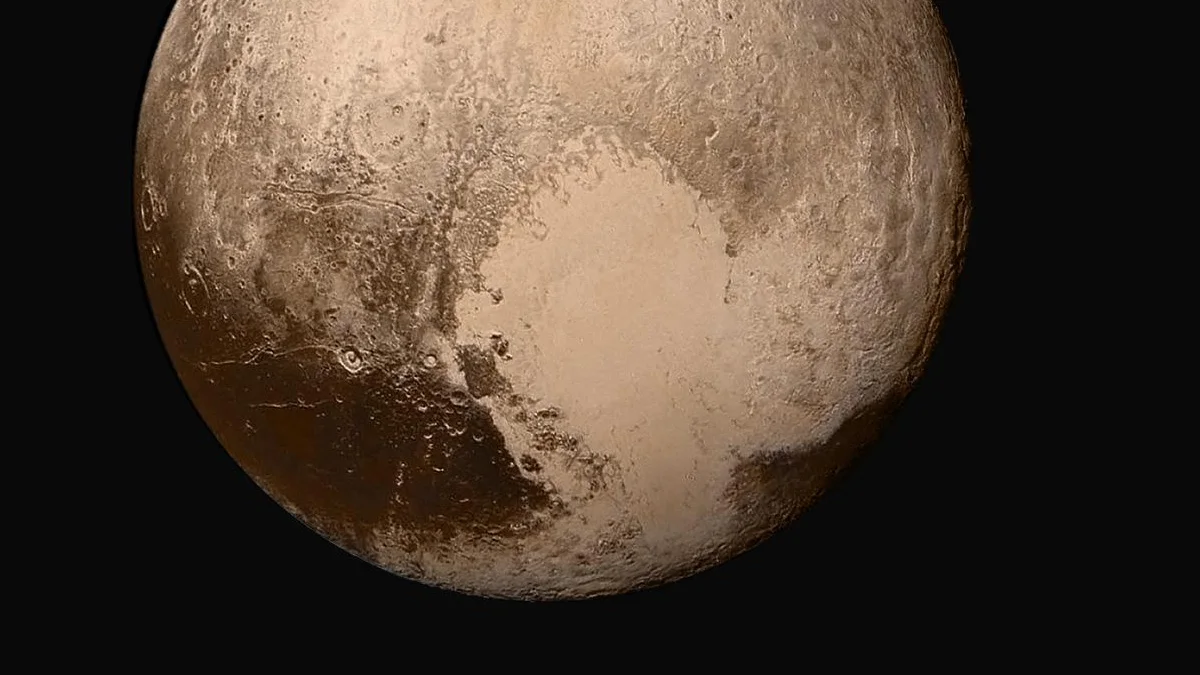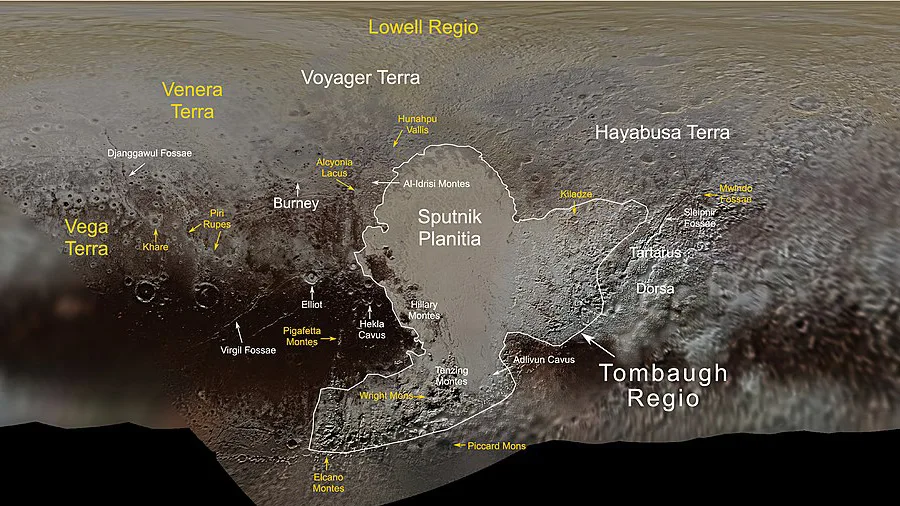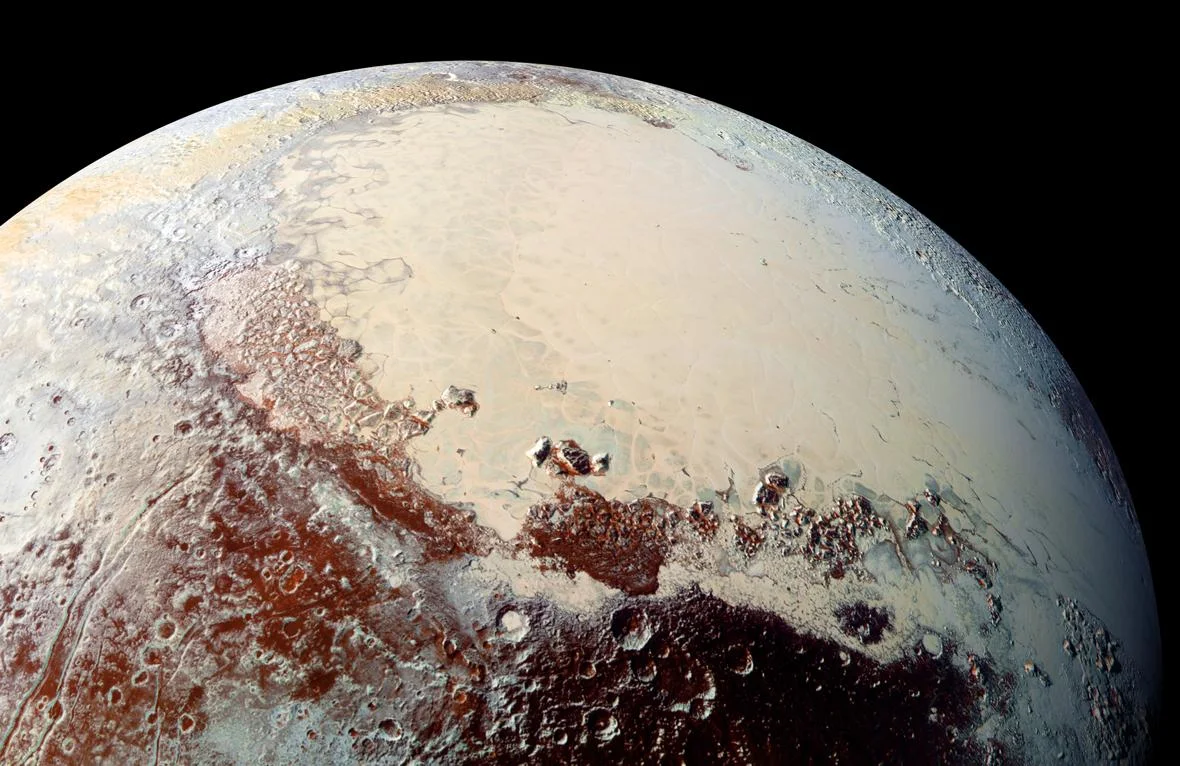
Pluto's weather is driven by the 'beating' of its icy heart
The frozen heart of Pluto appears to double as the dwarf planet's lungs
When NASA's New Horizons spacecraft flew past Pluto in 2015, it revealed an amazing sight - an immense bright feature on the surface that bore an uncanny resemblance to a heart. Now, a new study shows that Tombaugh Regio has a 'heartbeat' which drives the winds around the dwarf planet!
In contrast to Pluto's mostly pocked and cratered reddish surface, there is an immense bright region, much smoother than the rest, which scientists named Sputnik Planitia. This larger 'lobe' of Pluto's heart - the Tombaugh Regio feature - is like an immense ocean of nitrogen, frozen into rock-solid form by the frigid temperatures that far from the Sun.

This map, stitched together from images and data gathered by NASA's New Horizons spacecraft in 2015, shows the names of features on Pluto's surface. Credits: NASA/JHUAPL/SwRI/Ross Beyer
To determine if certain surface features in and around Sputnik Planitia could be explained by airflow, an international team led by Tanguy Bertrand, a planetary scientist at NASA's Ames Research Center, created a detailed climate model of Pluto's atmosphere.
Their high-resolution model revealed that sunlight falling on the surface of Sputnik Planitia during the daytime causes nitrogen gases to turn directly from solid to vapour. The added nitrogen in the air would then flow around the planet towards the west and northwest, driven by pressure differences in the atmosphere.
When night falls over Sputnik Planitia, this sublimation stops and the nitrogen gas once again turns back to ice.
This daily cycle, the researchers say, has effectively set up a 'heartbeat' from the region, which drives winds at an average speed of 10 metres per second around the dwarf planet. (For reference, 10 m/s is the speed of a 'fresh breeze' by the Beaufort wind force scale.)
"This highlights the fact that Pluto's atmosphere and winds – even if the density of the atmosphere is very low – can impact the surface," Bertrand said in a press release of the American Geophysical Union (AGU).
Remarkably, in addition to revealing this 'heartbeat' from Sputnik Planitia, the team's climate model also showed that Pluto's winds blow retrograde - that is, to the west, in the opposite direction to the dwarf planet's rotation. Of all the planets with atmospheres in our solar system, this is the only one that shows this behaviour for the entire surface.

This high-resolution colour map of Sputnik Planitia is the result of combining blue, red and infrared images taken by the New Horizons spacecraft's Ralph/Multispectral Visual Imaging Camera (MVIC). Credit: NASA/JHUAPL/SwRI
According to the AGU: "These wind patterns stemming from Pluto's nitrogen heart may explain why it hosts dark plains and wind streaks to the west of Sputnik Planitia. Winds could transport heat — which would warm the surface — or could erode and darken the ice by transporting and depositing haze particles. If winds on the dwarf planet swirled in a different direction, its landscapes might look completely different."
"Sputnik Planitia may be as important for Pluto's climate as the ocean is for Earth's climate," Bertrand said. "If you remove Sputnik Planitia – if you remove the heart of Pluto – you won't have the same circulation."
Sources: JHUAPL | AGU | Journal of Geophysical Research











